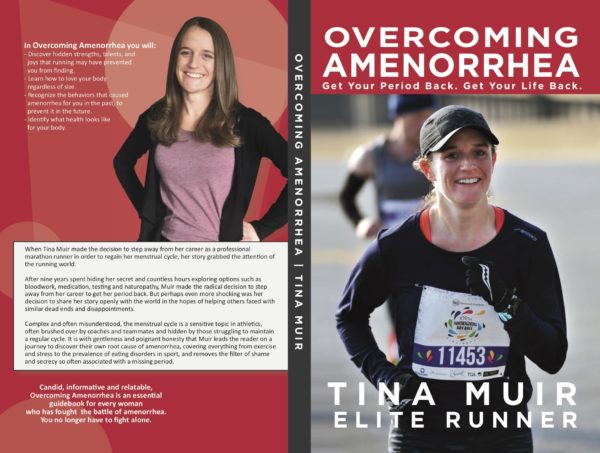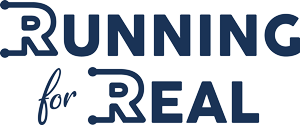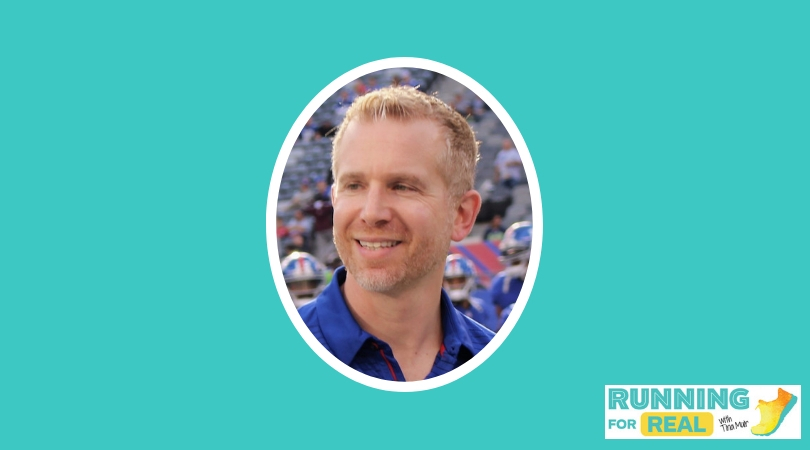Take Your Marathon Time to the Next Level
When it comes to running a race as long as the marathon, each small improvement can make a big difference. There are a multitude of areas to improve on: posture, nutrition, training, mental preparation and attire just to name a few.
This week on the Running for Real podcast, we interviewed Nick Anderson. Nick has been a coach to a variety of runners, beginners and Olympians alike. More recently Nick has coached the Great Britain team in the world half marathon. He founded “Running With Us” and helps to coach many to get to the next level.
Nick is also part of a team that helps runners that are a tier below certain Olympic or Commonwealth qualifying times and helps them get to that standard. He says that although these athletes may be training more than casual runners, the principles are the same for all levels of marathon runners. “The basics are still the same,” says Nick, “We are looking at making sure the right type of recovery running, running economy work, and long runs are being structured correctly and that the athlete knows how to look after themselves.”
Whether you are just planning your second marathon, a first-time Boston qualifier or an Olympic hopeful, Nick has some good advice for you in today’s podcast.
The “Long Run” Isn’t the Only Important Run
Doing a long run every Sunday or once every ten days is a common way to train for a marathon. This is a pretty crucial run. Your body can never be prepared to run a marathon if it doesn’t get used to some long runs. However, this is definitely not the only workout that matters, and there are several ways to help your body be prepared for 26.2.
Maintaining correct form and avoiding cramps comes from strength training. This can include doing hills runs, speed work, or getting in the gym. Strength training is more than just getting sweaty and tired in a gym workout. Nick says that it is important that the right muscle groups are being activated and strengthened. Take the time to find a physical trainer who understands weights for a runner and the biomechanics and correct posture needed. You won’t regret it. “I would really spend a little bit of money on that one,” says Nick.
What about learning how to run tired? A great way to simulate running on tired legs is to begin by running 5 miles at a marathon pace, then running 5 miles at your 10k pace and finish by running the last 5 at marathon pace again. This way you can prepare your mind and body to run on tired legs without having the fatigue of running over 20 miles.
Make sure to do some strength training, some threshold training, some long runs, and some recovery runs. Each one has their purpose and will play a role in your improved marathon times.
Adapt and Recover
Nick compares training for a marathon to climbing Mount Everest. When you train to climb Mount Everest you first spend several weeks at base camp. Acclimating here can be compared to the base amount of training you do for your marathon. This can mostly be mindless work, just putting in the miles and getting your body used to running in general.
Once a climber is acclimated, they move up to the next base and spend some time there before coming back to the base camp to recover. They complete this process a handful of times, going up a bit further, and coming back down a camp or two. This is exactly what a marathoner needs to do during training. Long and hard runs are great, but without proper recovery, the body can’t adapt.
“You get fitter through adapting,” says Nick, “You don’t get fitter through just doing more training.” Nick’s opinion is that to get the most out of a hard run, you need to be recovered from the last run. This is how the body can adapt; teach your body how to take it to the next level and avoid burning out.
We Are All Performance Runners
It is easy to think of yourself as only a casual or even unaccomplished runner. But Don’t! Nick reminds us that anyone who has a desire to improve their running is a performance runner. Be proud of that. You are a performance runner.
Embrace the fact that you want to improve, and find ways to do so. Allow yourself to recover more fully. Pay for some strength training sessions. Train smart, not just hard. Adapt. These changes will take your running to the next level. YOU are a performance runner.
Resources:
Listen to the Running for Real Podcast here:
[podcast src=”https://html5-player.libsyn.com/embed/episode/id/8552531/height-orig/90/theme/custom/thumbnail/yes/direction/forward/height/90″ height=”90″ width=”100%” placement=”bottom” theme=”custom”]Apple (iTunes) Podcast | Sticher | Castbox | Overcast | Spotify | Google Play | iHeartradio |

My new book is out in the world!
You can purchase a copy of Overcoming Amenorrhea: Get Your Period Back. Get Your Life Back.
Thank you SO much for all of the support my friends, I couldn’t of done any of this without you all!!
Secondly, I am conducting a survey, to figure out how to serve you better. If you have a few minutes, it will help both of us to being in the same place, but won’t take long. I would love to learn from you. Find the survey here.
Thanks for Listening! I hope you enjoyed today’s episode.
To share your thoughts:
Leave a note in the comment section below.
Join the Running for Real Facebook Group and share your thoughts on the episode (or future guests you would like to hear from)
Share this show on Twitter, Facebook, Instagram, or Pinterest.
To help out the show:
Leave an honest review on iTunes. Your ratings and reviews will really help me climb up the iTunes rankings and I promise, I read every single one.
Not sure how to leave a review or subscribe, you can find out here.
Thank you to Nick, I look forward to hearing your thoughts on the show.



